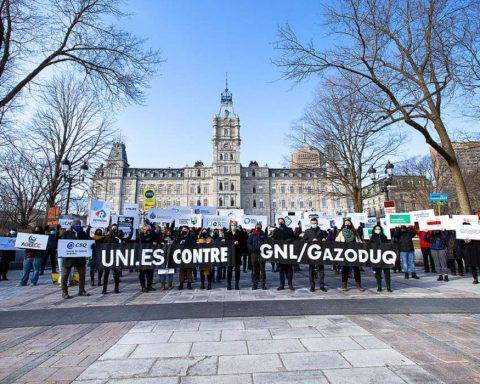At the 1992 Rio de Janeiro Earth Summit, the global community agreed to work together to prevent “dangerous” levels of climate change. One of the first tasks was establishing country-level reporting on greenhouse gas emissions, since without this knowledge there would be no baselines for mitigation policy and no general sense of where, and when, things were improving.
Today, this call for climate-related transparency is being echoed in the financial community. The technical nature of the challenge, coupled with the fact that many find the world of finance rather opaque to begin with, means that this climate transparency is far from a mainstream concern. But it should be. Transparency is fundamental to our fight against climate change, and without it your retirement savings could be at risk.
Large investors and asset managers are trained to deal – even capitalize – on risk, but they need consistent and reliable information, which is currently lacking in the climate space. Individuals might want this information because they don’t want to invest their money in areas misaligned with climate action. Boards of directors need this information to guide corporate strategy and oversee risk-management policies. Society as a whole needs this transparency to guide capital toward the best available solutions for climate change.
So where are these transparency gaps and what can be done to bridge them?
After more than 50 interviews with financial experts, Smart Prosperity Institute and Barb Zvan, CEO of the Ontario’s University Pension Plan, and member of the Expert Panel on Sustainable Finance, released a report in which transparency challenges and potential solutions are grouped into three distinct pillars:
1) Fostering low-carbon markets and investments
Increasingly, investors want to know if their portfolios are aligned to low-carbon industries and activities. But do you know just how “low-carbon” your investments are?
This question is difficult to answer because it’s unclear how to classify certain types of investable activities. If a company is using progressively better technologies to lower emissions, and is cleaner than its competitors, how do you label its endeavours?
Different classification systems are available worldwide to help solve this challenge (the EU taxonomy, emerging Canadian transition-linked taxonomy, climate bond taxonomy, etc.), but more work needs to be done around how these taxonomies are related, and how to label an investment portfolio under each. Tracking the environmental impacts of financial products (such as bonds) that use classifications such as “green” or “transition-linked” is also crucial.
At the same time, building the business case for clean investments will require better information on comparability and impact. For instance, consistent labelling around the energy efficiency of buildings, and how retrofits and climate-resilience measures lower costs over the long-term, would help boost investments in those buildings.
2) Supporting climate-related disclosures
If investors, individuals, boards and society at large want greater transparency around the risks posed by the climate crisis – and the opportunities presented by the resulting policy and societal shifts – corporate climate disclosures are key. The Task Force on Climate-related Financial Disclosure (TCFD) developed recommendations for how companies, corporations and investors can self-report on their climate risks and opportunities, and these are quickly becoming the global standard. The challenge is that TCFD disclosure is voluntary in Canada, and so companies often pick and choose what, and how, they report.
“We hear it from investors, and everyone else, that the quality of the climate-related data out there is poor,” said one report interviewee. “When it does exist it’s pretty heterogeneous, it’s hard to compare like-for-like, even within the same sector.”
To make TCFD reporting easier, and increase the consistency of data, we need to build a critical mass or even rules around the most common metrics, agreeing on methodologies for reporting areas such as indirect emissions, like those arising through supply chains or waste disposal.
Other ways to support TCFD include providing a clear methodology for companies to showcase their climate-related pledges, describing a clear sense of impact, ambition and progress – and highlighting how those compare to their peers. Support for forward-looking scenario analysis is also needed. This means simplifying the exercise of “what ifs” when it comes to climate change, by providing information on how key indicators are likely to change under standard scenarios, such as carbon prices, consumption patterns and energy prices.
3) Recognizing physical risk
The last pillar is an essential first step in building climate resilience: we need better information about the physical impacts of climate change on our built environment and supply chains.
This means more granular, up-to-date, forward-looking information on climate hazards like floods, forest fires and coastal erosion, and the steps taken to alleviate those hazards. Building resilience will help communities access better insurance, loans and mortgages over the long-term and will help identify sectors or industries requiring transitional strategies in anticipation of our changing climate.
By bridging the transparency gap in sustainable finance, we will have the right information to address climate risks and harness clean growth opportunities – ultimately giving us the best chance of building resilience and succeeding in the low-carbon transition.
Katherine Monahan is a senior research associate at the Smart Prosperity Institute and co-author of the new report “Bridging the Transparency Gap in Sustainable Finance”.







